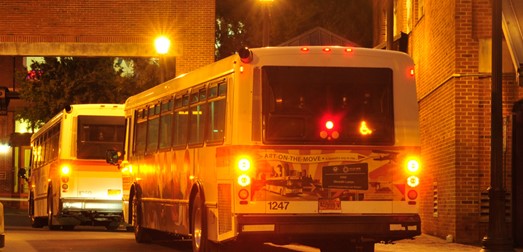
Human trafficking is a widespread problem and the second largest criminal activity in the world. Human trafficking refers to the exploitation of human beings for the purposes of commercial sex or forced labor where the trafficker uses force, fraud, or coercion to make money off a victim.
While trafficking can happen anywhere, traffickers often use public transit to transport their victims. A 2018 survey of human trafficking survivors conducted by the Polaris Project revealed that 42% of surveyed victims in the United States were trafficked using local or long-distance buses. Research shows that train stations, bus stops and other facilities are key locations that criminals use to recruit, meet, or transport victims. However, transit facilities also provide an opportunity for human trafficking victims to escape.
To combat this serious problem, the N.C. Department of Transportation is working with its federal, state, and local partners on an educational campaign aimed at teaching transit drivers, travelers, and others how to properly identify and handle suspected cases of human trafficking. By recognizing the signs of human trafficking, travelers and transit employees can discreetly alert authorities, who can take action to address the problem.
